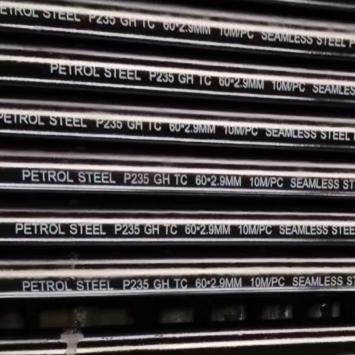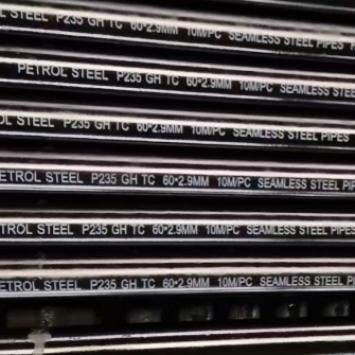What are the differences between brass valves and bronze valves?
What are the differences between brass valves and bronze valves?Bronze Valves
The Romans were the first to manufacture flow control valves, much like those today, in bronze as early as the 1st century BC.
One disadvantage of bronze is that bronze can only be cast or machined from a cast ingot. The rough exterior of bronze -- which is known for porosity and shrinkage -- is a direct result of casting. But on the other hand, bronze is quite inexpensive, more ductile, and has great resistance to corrosion, especially from any caustic substances similar to seawater.
Brass Valves
More ductile than bronze, brass is also more versatile, as various combinations of copper and zinc create a wide range of brass with varied properties.
Brass also lends itself very well to fabrication, as it can be cast, forged, heat pressed, or cold-drawn in its creation. It is very machinable and its smooth surface helps keep prices down.
Brass has high corrosion resistance. Unfortunately, high levels of chlorine can destroy zinc content. OthERWise, brass is ideal for a variety of media, including natural gas. And, for drinking water, copper is a natural choice over bronze, as it tends to contain much less lead than bronze.
Of course, by today's standards, these contrasts and comparisons are primitive. Today, cast bronze alloys, which are used for a variety of applications, for potable water use are slowly being phased out. Brass (due to zinc content) produced through high-tech fabrication techniques using chemicals and heat.
These breakthroughs in metallurgy help eliminate the need to cast in the mix, and increase the durability of piping and fittings, ensuring the continued use of brass for years to come. But, while brass has a number of advantages over bronze, it is simply not to be counted.

Lead-free bronze valves (an assembly of bronze faucets or exceeding the pure lead water restriction act) are readily available and are usually the first choice for water pipes up to 3" in diameter.
This is the typical question in product categories. The answer is not as difficult as it may seem. Indeed it can be formulated in a schematic way.
Bronze and brass are both alloys and therefore derive from the fusion of several metals
Bronze: it is made up of copper and another metal, such as tin
Brass: it is made up of copper and zinc
Bronze, slightly darker in color than brass, was used in the past mainly to build statues, cannons, or bells. But today, definitely, brass is used much more: for example to make bathroom taps or musical instruments.

What is the difference between brass and bronze?
To understand the difference between brass and bronze we must initially remember what metal alloys are: the term metal alloys identify all those materials that derive from the combination of two or more chemical elements, the most abundant of which is always metal.
Brass and bronze are two metal alloys that are often confused with each other, but there is a clear difference between the two metal alloys.
But what is the difference between brass and bronze?
The term brass refers to a set of copper-zinc metal alloys having a zinc content of less than 50%. They have a yellow-gold color.

Brass fitting:
The term bronzes, on the other hand, refer to a set of copper-tin metal alloys having a maximum tin content of 28%.
Bronze bell:
So both brass and bronzes are metal alloys of copper: however, while brass (in addition to copper) contains zinc, bronzes (in addition to copper) contain tin.

What is the difference between brass and bronze?
To understand the difference between brass and bronze we must initially remember what metal alloys are: the term metal alloys identify all those materials that derive from the combination of two or more chemical elements, the most abundant of which is always metal.
Brass and bronze are two metal alloys that are often confused with each other, but there is a clear difference between the two metal alloys.
But what is the difference between brass and bronze?
The term brass refers to a set of copper-zinc metal alloys having a zinc content of less than 50%. They have a yellow-gold color.
Brass fitting:
The term bronzes, on the other hand, refer to a set of copper-tin metal alloys having a maximum tin content of 28%.
Bronze bell:
So both brass and bronzes are metal alloys of copper: however, while brass (in addition to copper) contains zinc, bronzes (in addition to copper) contain tin.
Properties of Brass
Brass is a copper alloy with zinc as the main alloying element. According to the chemical composition, brass is divided into ordinary copper and special brass. Due to its excellent plasticity, it is suitable for the manufacture of plates, rods, wires, tubes, and parts with a depth of field, such as condenser tubes, heat pipes, and mechanical and electrical parts.

Properties of Bronze
Bronze refers to copper-tin alloys, but in the industry usually refers to copper alloys containing aluminum, silicon, lead, beryllium, manganese, and more. Including bronze, silicon bronze, lead bronze, etc.
Bronze is also divided into pressure-treated bronze and cast bronze, which has high elastic limit and fatigue limit, good wear resistance and corrosion resistance, good electrical and thermal conductivity, non-magnetic, and does not produce when subjected to impact spark.
Tin bronze is widely used in shipbuilding, chemical industry, machinery, instrumentation, and other industries, mainly for the manufacture of corrosion-resistant and magnetic parts and wear-resistant parts such as elastic parts.
Bronze and brass are two of the most common materials used to make fittings. This preference occurs because both metals are reasonably malleable. They are both artificially created from natural metallurgical elements: brass is made up of copper and zinc, while the other is made up mostly of copper and tin. Each valve metal offers numerous and different benefits, but which one is best for your application may be worth debating.

Bronze and brass are different, but they have copper in common
In both alloys, in fact, a leading role is played by copper, which does not need great presentations… suffice it to say that today, in China; it is the most used material after iron. It can be seen taking the lion's share in various sectors: electrical, telephone, automotive ... the main reason why it is so appreciated is
the high electrical conductivity
but no less decisive are:
corrosion resistance,
ease of processing,
good heat conductivity.
Known since prehistoric times, it was probably the first metal used to make rudimentary weapons, tools, and implements. Copper objects have been found among the remains of many ancient civilizations, for example in Egypt, Asia, Europe, and Greece. The Romans, who called it Cyprus, also used it for the creation of tools used for religious practices.
More hardness and resistance: from pure copper to alloys
When pure, however, copper is too soft to work with. This is why it is convenient to combine it with other materials, giving life to alloys, which are hard and resistant, with high electrical resistance, and consequently not usable as conductor material.
Valve maintenance is a big difference
Brass gate valve maintenance is not suitable for on-site piping and the valve and disc positions of most shut-off valves can be replaced online without removing the entire valve from the pipeline. This is where the valve and the pipe are welded together. It fits very well. Of course, the difference between the Brass gate valve and the Brass globe valve is more than that.
In the selection and use, we must distinguish their similarities and differences to avoid confusion. The application range of the Brass globe valve and Brass gate valve is determined according to their characteristics. In smaller passages, shut-off valves are often used where better shutoff sealing is required; In large diameter steam and water supply pipes, brass gate valves are used because fluid resistance is generally less demanding.

Conclusion
These two types of valves are used for the general purpose of opening and closing, regulating the fluid flowing on the pipeline system. Each type has its own advantages and disadvantages.
Ball valves are more airtight than butterfly valves, so ball valves are generally better for gas-related projects. Butterfly valves are usually less expensive to install and maintain, so butterfly valves are often used in large-scale urban water supply and drainage projects. Valves are also popular for projects that control the flow of rivers or streams.
Ball valves and butterfly valves are both versatile, relatively inexpensive, and can stand the test of time. Which is right for which project depends on the size and scope of the application. For help determining whether to use a ball valve or a butterfly valve contact us.
Where to buy bronze marine valves in bulk from China in 2022?
Bronze marine valves are a specific product of PETROL STEEL CO.,LTD. The cost of such products depends entirely on the performance, shape, mounting mechanism, and other factors. You can order a range of Marine Bronze Valves from us in bulk.

C83600 Tin Bronze Valves: Our Top Valued Product
C83600 Tin Bronze Valves are an essential control element of the fluid control system. For the fluid control system, the solenoid valve plays an important role in opening and closing the flow of the medium. These valves are widely used.
Ships are inseparable from tin bronze valves. Each ship needs to use thousands of different valves, among which there will be solenoid valves. The performance of the solenoid valve will have a direct impact on the ship system and the overall performance of the ship.
Tin bronze valves are often added with phosphorus, zinc, lead, and other elements. It is corrosion-resistant, wear-resistant, has good mechanical properties and process properties, can be welded and brazed well, does not produce sparks when impacted, is non-magnetic, is cold-resistant, and has extremely high wear resistance.
It is a non-ferrous metal alloy with the smallest casting shrinkage and can be used to produce castings with complex shapes, clear outlines, and low airtightness requirements. Tin bronze is very resistant to corrosion in the atmosphere, seawater, freshwater, and steam, and is widely used in steam boilers and marine ship parts.
For more specifications and price of Marine Bronze Valves and Brass valves, please send us the inquiry, you will get a quick reply soon.
Headquarter: A-4F, Vantone Center, A6, Chaowai St., Chaoyang Dist., Beijing, China.
Tel/Fax: +86 10 8599 9168
WhatsApp/WeChat: +86 159 0035 7871
Email: sales@petrolsteel.com, jackywinn@foxmail.com
The reference technical links of the Marine Bronze Valves:
https://www.petrolsteel.com/DIN-AISI-JIS-Bronze-Sea-Valves-p.html
https://www.petrolsteel.com/PESCO-JIS-F7301-5K-Marine-Bronze-Valve-p.html
https://www.petrolsteel.com/The-types-and-characteristics-of-Marine-Bronze-Valves-n.html
 English
English Chinese
Chinese




